
12 Jun The Pupil of the Eye: Discussions and Resources
In The Advent of Divine Justice, Shoghi Effendi, Guardian of the Baha’i Faith, recounts:
“Bahá’u’lláh hath said,” writes ‘Abdu’l-Bahá, “that the various races of humankind lend a composite harmony and beauty of color to the whole. Let all associate, therefore, in this great human garden even as flowers grow and blend together side by side without discord or disagreement between them.” “Bahá’u’lláh,” ‘Abdu’l-Bahá moreover has said, “once compared the colored1 people to the black pupil of the eye surrounded by the white. In this black pupil is seen the reflection of that which is before it, and through it the light of the spirit shineth forth.”
Below is a collection of links to resources that dive deeply into the meaning of “the pupil of the eye” — a metaphor that Derik Smith says “adamantly centers black life in the figurative body of humanity”.2
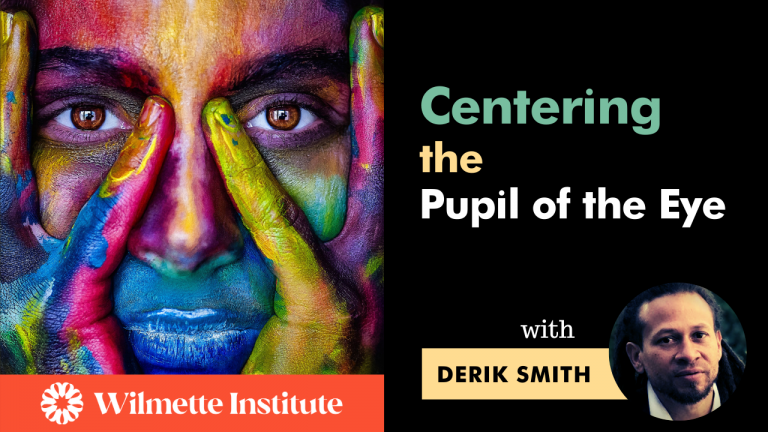
Wilmette Institute — Web Talk
Derik Smith: “Centering the Pupil of the Eye”
Description:
In the late nineteenth century, Bahá’u’lláh likened people of African descent to the “pupil of the eye” through which the “light of the spirit shineth forth.” In this talk I’ll suggest that the “pupil of the eye” metaphor is a deeply consequential, distinguishing feature of the transformative social and spiritual system laid out in Bahá’u’lláh’s Revelation. Discussing the nexus of capitalism, race, and intellectual history, I’ll summarize the arguments of an essay written for the Journal of Bahá’í Studies, in which I historicize Bahá’u’lláh’s elevating metaphor, and argue that it amounts to a forceful refutation of anti-blackness and thus a dismantling of one of modernity’s pivotal ideologies. I’ll finally talk about the way in which the unique integrity and coherence of Bahá’u’lláh’s system for the creation of universal unity and justice is especially manifest through analytical contemplation of the “pupil of the eye” metaphor.

Baha’i Blogcast with Rainn Wilson
Episode 39: Derik Smith
From Rainn Wilson:
In this episode, I’m at my home in LA with Derik Smith, a professor in the Department of Literature at Claremont McKenna College in California, and his work focuses on African American literary culture, with a particular interest in poetry. We talk about African American poet and Baha’i, Robert Hayden, plus we look at the concept of black people being likened to the “pupil of the eye” in the Baha’i Writings. We also discuss racism, the prison system, constructive resilience, and the role each one of us can play in ensuring individual and social transformation and justice. I hope you enjoy the conversation!
Dr. Smith also teaches and writes about representations of blackness in American film and musical culture. His 2018 monograph, ‘Robert Hayden In Verse: New Histories of African American Poetry and the Black Arts Era’, recently won the College Language Association’s annual book award. His current scholarship focuses on the poetics of rap, and the rise of the genre during the final decades of the twentieth century, as well as the connection between critical race studies and the Baha’i Faith. Smith regularly teaches courses in American prisons and nurtures activist interests in prison studies and pedagogy. He and his family live in Southern California, USA.
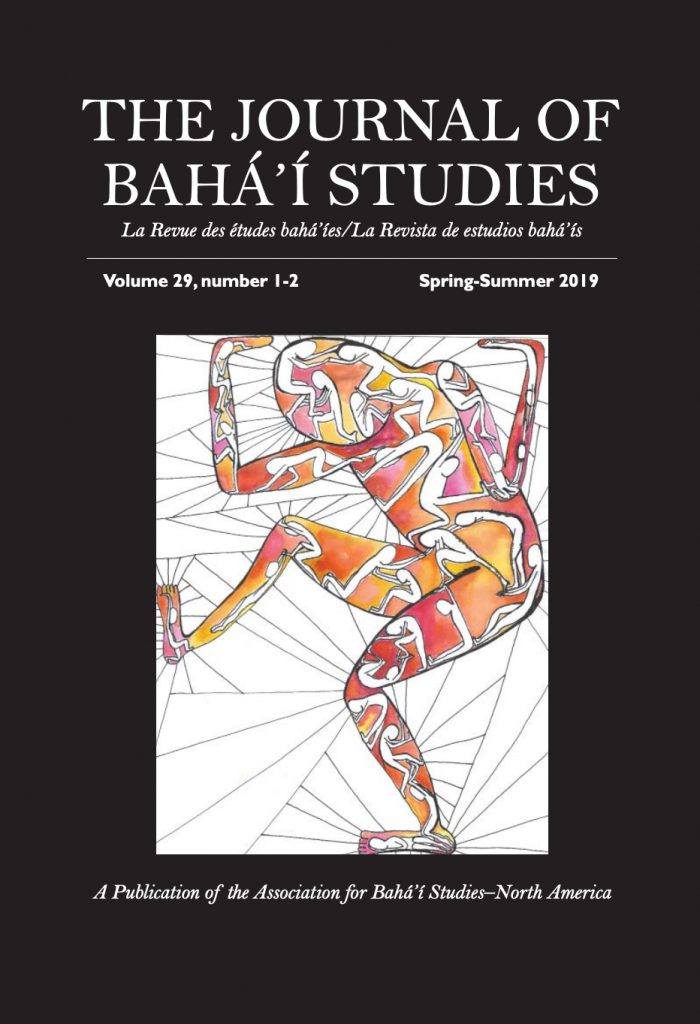
The Journal of Bahá’í Studies 29.1-2 2019 — pages 7-28
Centering the “Pupil of the Eye”: Blackness, Modernity, and the Revelation of Bahá’u’lláh
DERIK SMITH
Abstract
In the late nineteenth century, Bahá’u’lláh likened people of African descent to the “pupil of the eye” through which the “light of the spirit shineth forth.” This essay argues that the “pupil of the eye” metaphor is a deeply consequential, distinguishing feature of the transformative social and spiritual system laid out in Bahá’u’lláh’s Revelation. Studying the nexus of capitalism, race, and intellectual history, the essay historicizes Bahá’u’lláh’s elevating metaphor, arguing that it amounts to a forceful refutation of anti-blackness and thus a dismantling of one of modernity’s pivotal ideologies. Ultimately, the essay demonstrates that the unique integrity and coherence of Bahá’u’lláh’s system for the creation of universal unity and justice is especially manifest through analytical contemplation of the “pupil of the eye” metaphor.
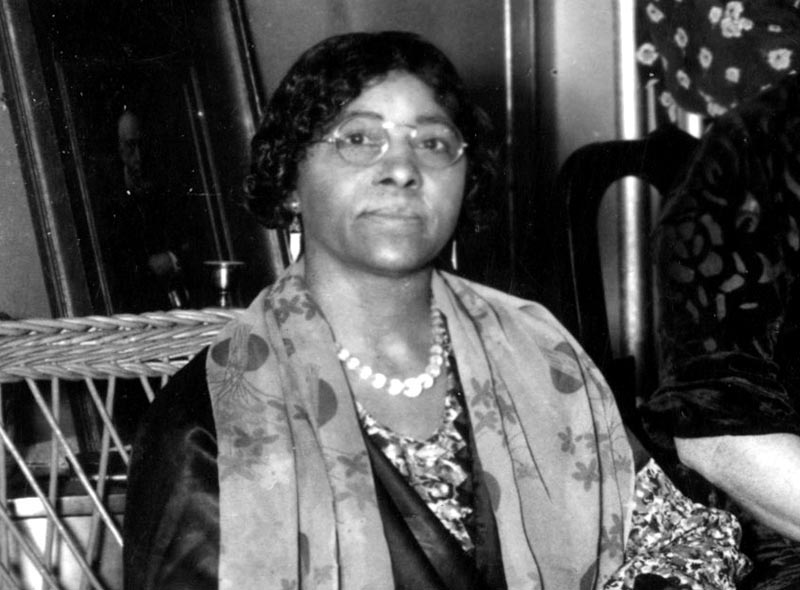
Baha’is of the United States — Bahai.us
Sadie Oglesby and the ‘pupil of the eye’
From the article:
A 1927 conversation between African-American Baha’i Sadie Oglesby and Shoghi Effendi, head of the Baha’i Faith at the time, underscored for Barbara Talley the spiritual station of black people.
Talley, a Baha’i in Gaithersburg, Maryland, was the driving force behind the November 2019 ARISE Pupil of the Eye Conference in Nashville, Tennessee.
The conference was held to foster understanding that black people are likened in the Baha’i writings to the “pupils of the eye,” from which all vision emanates. And to advance its corollary, that African Americans have a unique contribution to make in America fulfilling a destiny to lead the world spiritually.
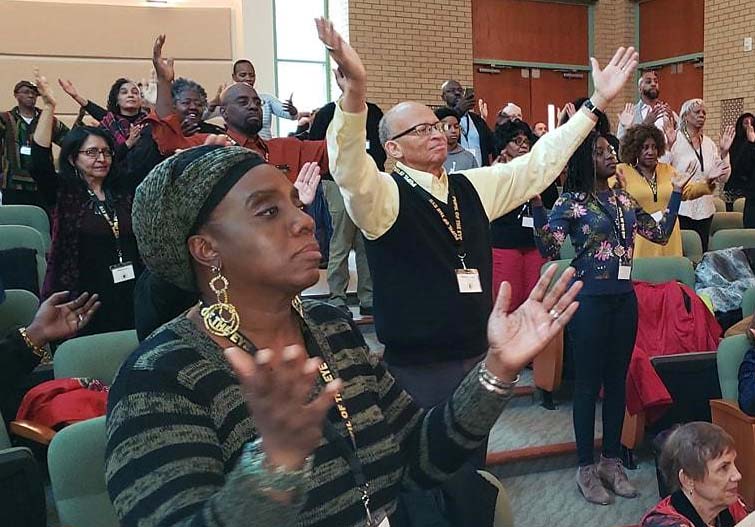
Baha’is of the United States — Bahai.us
Stories On ARISE Pupil of The Eye Conference:
Gathering and acts of service celebrate the spiritual station and mission of black people
Description:
More than 300 people met in Nashville, Tennessee, over Thanksgiving weekend with two goals: to delve into Baha’i writings related to the station of black people as “pupils of the eye” from which all vision emanates, and to explore how African Americans can move to the forefront of efforts to bring about a unified human family. Since the conference, dozens of gatherings and acts of service have spread that twin message nationwide.
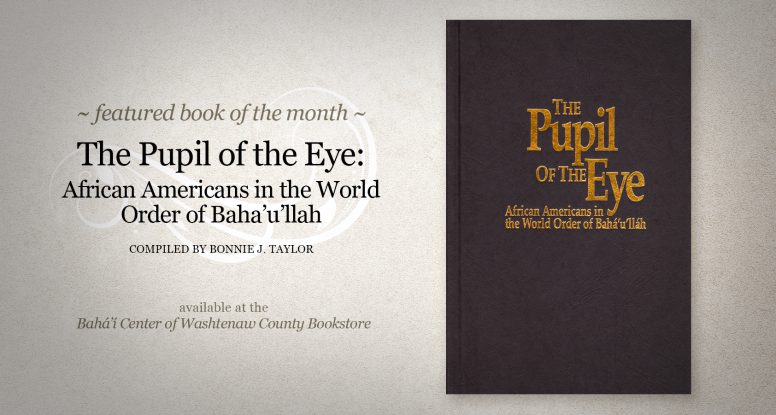
Bahá’í Center of Washtenaw County — Book Review
The Pupil of the Eye: African Americans in the World Order of Baha’u’llah
Complied by Bonnie J. Taylor
This book is a compilation of quotations about the role of African Americans in the Baha’i Faith, and includes a forward that explains the title and reference to African Americans as “the pupil of the eye”. The author also states that the writings in the compilation describe “their crucial and indispensable role in the Cause of God”. The book is well-organized and contains a wide range of quotations. The author begins with quotations pertaining directly to African Americans, then moves through race, the oneness of mankind, and unity in diversity. She then organizes writings on solutions to racism and teaching the Faith. This progression lends itself well to sequencing learning and understanding, and the order develops naturally for the reader. Ms. Taylor even has organized sections pertaining to the responsibilities of Baha’is of European descent and Baha’is of African descent in the section on racism, which is helpful reading for all.
(1) In the early twentieth century when ‘Abdu’l Bahá was writing and giving talks, “colored people” was considered a respectable term to describe those of African descent.
(2) Smith, Derik. “Centering the ‘Pupil of the Eye’: Blackness, Modernity, and the Revelation of Bahá’u’lláh.” The Journal of Bahá’í Studies 29.1-2 2019, p. 26

